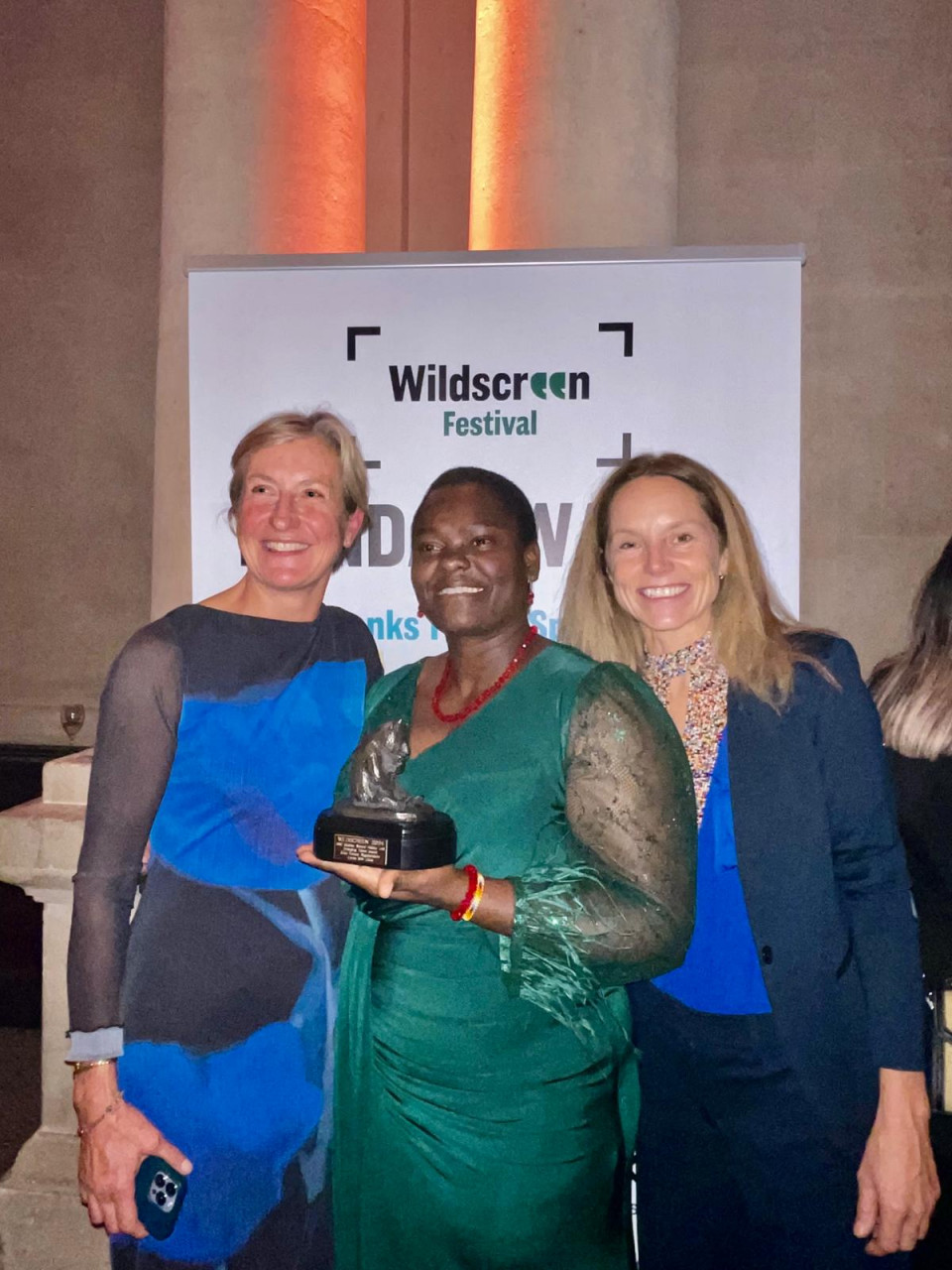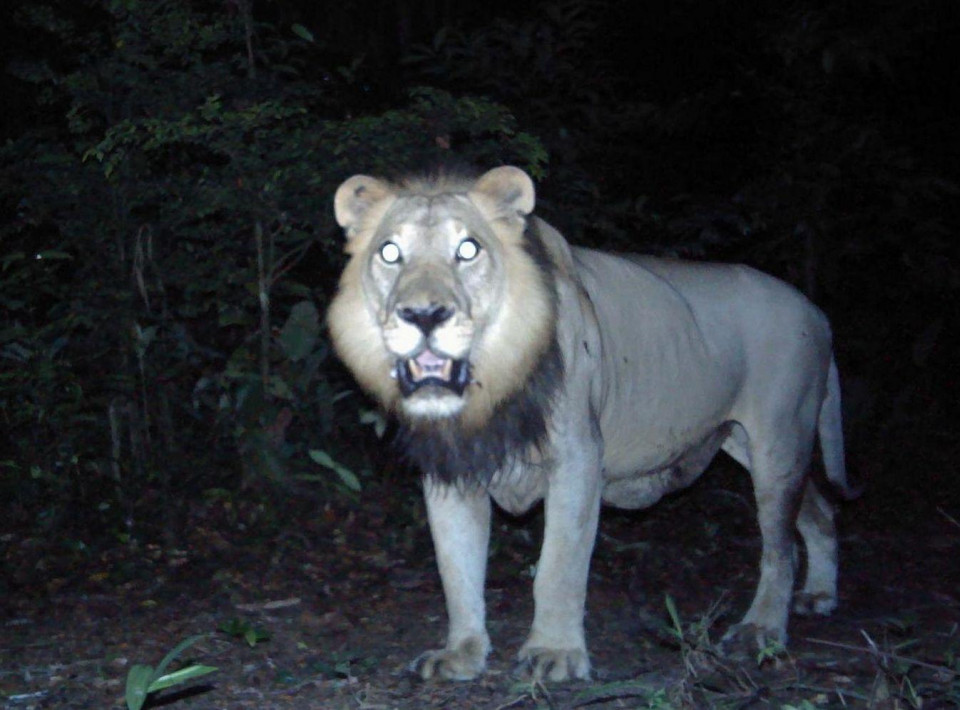ERICA RUGABANDANA ’S HISTORIC DOUBLE WIN AT JACKSON WILD & WILDSCREEN

Congratulations to Erica Rugabandana for her incredible double triumph! First, she took home the Global Voices Award at the Jackson Wild Festival in Washington. Then, just a month later, she was awarded the prestigious Panda Award for Emerging Talent at the Wildscreen Festival in Bristol. Both honours celebrate her groundbreaking film, Kuishi Na Simba: Living With Lions, which has been making waves worldwide.
What an achievement for the fantastic performances from the film’s cast, non-professional actors from Robanda Village in Northern Serengeti. A big shout out goes to Josephine Makuru Kitenamote – Erica’s lead actress.
Erica is the first Tanzanian female conservation filmmaker to receive prestigious international recognition. Her powerful storytelling shines a spotlight on Tanzania’s majestic wildlife and highlights the importance of co-existence between humans and lions.
These milestones would not have been possible without the tremendous support of all of our contributors and collaborators. A heartfelt thank you to Curiosity Stream, VII Foundation, Brian Henderson, RED cameras, NEWF, TANAPA, TAWIRI, Julie Busse, Justine Evans, Cyril Barbançon, Muneera Sallies, Crowd Funding supporters and the Ikoma community of Robanda village.
Excited for what lies ahead for Erica and the conservation impact her work will continue to have on audiences worldwide.
HUMAN WILDLIFE CO-EXISTENCE IMPACT CAMPAIGN AND A NEW PARTNERSHIP WITH THE AUSTRALIAN HIGH COMMISSION
 With Nature Through Her Eyes’ support, Erica Rugabandana secured a grant from the Australian High Commission to develop and implement her impact campaign in villages, victims of human-wildlife conflict around the Serengeti National Park. Her campaign aims to raise awareness among these communities and through her film to change mindsets and relationships to the neighbouring lions. She has screened the film and hosted in-person Q&A sessions with over 3,000 people, including many schools.
With Nature Through Her Eyes’ support, Erica Rugabandana secured a grant from the Australian High Commission to develop and implement her impact campaign in villages, victims of human-wildlife conflict around the Serengeti National Park. Her campaign aims to raise awareness among these communities and through her film to change mindsets and relationships to the neighbouring lions. She has screened the film and hosted in-person Q&A sessions with over 3,000 people, including many schools.
Erica Rugabandana:
“ My recent screenings helped to bridge the information gap among communities, facilitating discussions on human-wildlife conflict and the adoption of innovative strategies on wildlife conservation. We were also fortunate to have the Tanzania Wildlife Authority involved with the initiative, which will help inform policy making, education programs and community engagement on these issues in the future.”
My recent screenings helped to bridge the information gap among communities, facilitating discussions on human-wildlife conflict and the adoption of innovative strategies on wildlife conservation. We were also fortunate to have the Tanzania Wildlife Authority involved with the initiative, which will help inform policy making, education programs and community engagement on these issues in the future.”
The film has been screened across the world including at Australia’s Wild Earth Oceania Film Festival earlier this year and at the Australian High Commission in Kenya as the opening of Africa’s only wildlife film festival, Pridelands Wildlife Film Festival. It was the most viewed film on the Curiosity Stream platform, reaching an audience of millions internationally.
Australian High Commissioner to Kenya, H.E. Jenny Da Rin:
“Like East Africa, Australia is fortunate to be home to unique and wonderful plants and wildlife – more than 80 per cent of our plants, mammals, reptiles and frogs are unique to Australia. As the world adapts to impacts of climate change and population growth, Australia and East Africa share similar challenges of human-wildlife conflict. Initiatives like Erica’s are crucial for community awareness, encouraging action and the better management of human–wildlife conflict.”
AISHWARYA SRIDHAR’S LEOPARD DYNASTY: THE RISE OF RANA - JAIPUR’S URBAN JUNGLE
 Wildlife filmmaker Aishwarya Sridhar’s upcoming first ‘Bollywood’ wildlife documentary Leopard Dynasty: The Rise of Rana, takes viewers into the forests of Jhalana, near Jaipur, India. Once the hunting grounds of Rajput kings, this urban forest is now home to a thriving leopard population, with Bahadur as its long-standing ruler.
Wildlife filmmaker Aishwarya Sridhar’s upcoming first ‘Bollywood’ wildlife documentary Leopard Dynasty: The Rise of Rana, takes viewers into the forests of Jhalana, near Jaipur, India. Once the hunting grounds of Rajput kings, this urban forest is now home to a thriving leopard population, with Bahadur as its long-standing ruler.
The story follows Rana, Bahadur’s young son, as he grows from a dependent cub into a strong adult contender for his father’s territory. From hunting his first prey to challenging his father for control, Rana’s journey highlights the complex dynamics of leopard life in Jhalana.
Sridhar uses the cinematic codes of the epic ‘Bollywood’ cinema and delves into her own storytelling traditions offering a truly original perspective in wildlife narratives. Through this engaging storytelling approach, she aims to attract teenage and young adult audiences to wildlife films, highlighting the importance of protecting apex predators and the ecosystems they inhabit. Sridhar has collaborated closely with Nature Through Her Eyes at every stage of the film’s development, which was released in February 2025.
For more information, visit terramater.at.
KRISTINA OBAME’S THE LAST LION OF GABON - A SURPRISE AND HISTORIC WILDLIFE CONSERVATION EFFORT
Gabonese filmmaker Kristina Obame’s latest project, The Last Lion of Gabon, tells the story of the Bateke Lion, a unique forest-living lion thought to have been hunted to extinction by French Colonisers in the 19th century. But recently deep in Gabon’s equatorial forests, a solitary male lion was captured on a camera trap, stunning scientists and sparking a national conservation programme.
The film follows a dedicated team of scientists working on this historical wildlife translocation project—introducing female lions to Gabon to restore a forest-dwelling pride. However, such a reintroduction requires consultation with local communities, the younger generation no longer accustomed to living alongside apex predators.
Obame’s documentary not only captures the challenges of this ambitious effort but also highlights the hope of reversing history and bringing the Bateke lion back from the brink of extinction.










